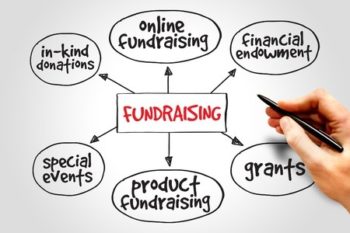Nonprofit Marketing: Exactly How to Develop a Powerful Brand Name and Boost Support
Nonprofit Marketing: Exactly How to Develop a Powerful Brand Name and Boost Support
Blog Article
The Duty of Community Interaction in Nonprofit Fundraising: Structure Lasting Relationships for Lasting Assistance
Neighborhood involvement is increasingly acknowledged as a vital part of effective nonprofit fundraising. The methods and methods utilized to involve areas vary extensively, increasing vital concerns concerning performance and influence.
Understanding Neighborhood Engagement
Community involvement is a crucial part of effective nonprofit fundraising efforts. Nonprofits must recognize essential stakeholders-- such as community participants, neighborhood organizations, and various other organizations-- to develop efficient engagement strategies.
Reliable neighborhood engagement is based on active listening and responsiveness to the demands and rate of interests of the community. This procedure involves obtaining feedback, understanding neighborhood characteristics, and making sure that the company's goal lines up with regional top priorities. Engaging the area can take various types, consisting of public meetings, volunteer chances, and collaboration initiatives, each developed to encourage involvement and financial investment in the company's objectives.
Additionally, area engagement need to be come close to as a continuous discussion rather than a single effort. By cultivating an inclusive atmosphere where area voices are listened to and valued, nonprofits can develop a solid structure for future fundraising ventures. Eventually, a deep understanding of community interaction encourages organizations to create genuine links that boost their overall effectiveness and sustainability.
Advantages of Solid Relationships
Solid partnerships developed via area involvement return various benefits for not-for-profit fundraising efforts. Firstly, these relationships foster count on and integrity, crucial components in encouraging contributors to contribute. When potential advocates see a nonprofit proactively included in their neighborhood, they are a lot more most likely to think in its objective and impact.

Additionally, these connections help with effective interaction. Nonprofits can leverage their connections to share stories of influence, updates, and requires, making sure that advocates remain educated and engaged. This open line of communication not just reinforces bonds however likewise urges word-of-mouth promotion, expanding the nonprofit's reach.
Lastly, strong community ties can bring in new companions and sponsors. Individuals and services are a lot more inclined to align with companies that demonstrate meaningful neighborhood participation, supplying added resources and assistance that can significantly enhance fundraising capacities. Therefore, growing robust partnerships via neighborhood involvement is important to a nonprofit's long-term fundraising success.
Techniques for Effective Interaction
Just how can nonprofits properly involve their areas to improve fundraising initiatives? Creating targeted methods is vital for cultivating meaningful connections. Initially, leveraging social networks platforms makes it possible for companies to share their mission dynamically and interactively, reaching a wider audience. Regular updates, involving material, and calls-to-action can galvanize area interest and engagement.
Second, hosting community events, such as workshops, volunteer possibilities, or fundraising drives, assists in in person interaction, permitting nonprofits to display their influence and efforts. These occasions not only raise funds however also grow connections and allow community participants to involve directly with the cause.
Third, executing customized communication strategies can enhance interaction. Tailoring messages to particular benefactor segments based upon rate of interests and previous contributions fosters a feeling of belonging and investment in the company's goal.
Finally, producing partnerships with regional organizations and community leaders can intensify outreach initiatives. Collective efforts can boost presence and trustworthiness, demonstrating a cumulative dedication to the community's wellness. By incorporating these techniques, nonprofits can develop long lasting partnerships that improve fundraising efforts and drive sustainable support.
Gauging Interaction Success
While engaging the community is critical for successful not-for-profit fundraising, determining the efficiency of these engagement efforts is similarly important. Developing clear metrics enables organizations to evaluate exactly how well they are linking with their target market and achieving their fundraising objectives. Key efficiency indications (KPIs) such as benefactor retention prices, volunteer engagement degrees, and engagement on social media sites systems give tangible data for evaluation.

Routinely analyzing these metrics enables organizations to pivot their methods when required, making certain that area engagement continues to be aligned with their total mission. Moreover, sharing these outcomes with stakeholders promotes openness and constructs trust fund, motivating further area participation. Inevitably, a robust measurement structure not only notifies future fundraising initiatives however likewise enhances the connection in between the my response nonprofit and its fundraising consultant fans, preparing for sustainable success.
Instance Studies in Community Impact
Various case research studies illustrate the profound impact that area engagement can carry nonprofit fundraising success. One noteworthy example is the "Something to chew on" campaign, where a regional food bank partnered with colleges and businesses to host area dinners. These occasions not just elevated funds but also cultivated a feeling of belonging among individuals, substantially boosting contributor retention rates.
Another compelling instance is the "Green Spaces Project," which entailed local residents in the revitalization of city parks. This initiative not just gathered financial backing from regional organizations however additionally cultivated a volunteer base that added to continuous upkeep and shows. The feeling of ownership and pride among area participants converted right into sustained payments.
In the realm of arts, the "Art for All" campaign successfully engaged neighborhood artists and customers to create collective art installments, bring about boosted visibility and donations for a regional arts not-for-profit.
These instances highlight that when nonprofits prioritize community participation, they can produce enduring connections that enhance fundraising efforts, making sure sustainable support and cultivating a lively neighborhood society. Such cases demonstrate that community engagement is not just a method but a crucial column of not-for-profit success.
Verdict
Finally, community interaction is integral to the success of not-for-profit fundraising initiatives. By cultivating solid partnerships with local stakeholders, organizations boost trust fund and trustworthiness, bring about improved contributor retention and commitment. Applying efficient engagement techniques and gauging their impact makes sure that nonprofits can adjust and grow. Ultimately, a durable over here foundation of neighborhood assistance not only enhances fundraising prospective but also grows a society of partnership, essential for attaining long-lasting business objectives and sustaining significant impact.
Nonprofits have to recognize key stakeholders-- such as community members, local organizations, and various other companies-- to develop reliable engagement techniques.

In conclusion, neighborhood involvement is essential to the success of not-for-profit fundraising initiatives.
Report this page